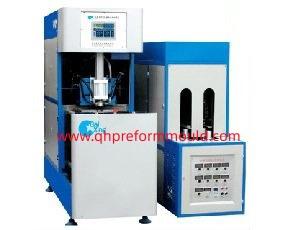Polycrystalline Solar Modules: Affordable Solar Power for Global Adoption

Introduction
The Polycrystalline Solar Modules Market is expanding as global adoption of solar energy accelerates across residential, commercial, and utility-scale applications. Polycrystalline (poly or multicrystalline) solar modules are manufactured using multiple silicon crystals, offering a cost-effective and widely used photovoltaic (PV) solution. Known for their durability, ease of installation, and balanced efficiency-to-cost ratio, polycrystalline modules continue to be preferred in markets with price-sensitive consumers and large-scale deployment needs. Although monocrystalline modules provide higher efficiency, polycrystalline modules remain competitive due to their lower manufacturing cost, reduced energy payback period, and strong performance under high-temperature conditions. The market is projected to grow at a CAGR of around 5–7% over the forecast period, supported by government subsidies, rising renewable adoption, and growing solar installation capacity across emerging economies. Polycrystalline panels remain an attractive choice for distributed solar systems, rural electrification, and large solar farms, particularly in Asia, Africa, and Latin America.
Market Drivers
Rapid growth of rooftop and ground-mounted solar installations is a major driver for polycrystalline module demand. Affordable pricing compared to monocrystalline panels makes polycrystalline solar ideal for mass deployment in cost-sensitive markets. Government incentives, subsidies, and favourable renewable energy policies are accelerating adoption across residential and commercial sectors. Increasing demand for off-grid solar solutions in remote and rural areas supports market expansion. Rising energy costs and consumer awareness about clean power encourage solar installation. Technological improvements in cell design, anti-reflective coatings, and module durability are enhancing performance, making polycrystalline modules more reliable. Additionally, corporate sustainability goals and rising investments in solar parks support market growth.
Market Challenges
Lower efficiency compared to monocrystalline panels limits adoption in space-constrained installations requiring maximum energy output. Declining manufacturing costs of monocrystalline modules have intensified competition, reducing the market share of polycrystalline products. Higher sensitivity to shading and lower conversion efficiency in low-light conditions can reduce output. The presence of cheaper, non-certified poly panels from low-quality manufacturers affects consumer confidence. Disposal and recycling of end-of-life PV modules pose environmental challenges. Supply chain fluctuations and silicon price volatility impact production costs. Additionally, increasing preference for advanced technologies such as bifacial and PERC mono modules may reduce long-term demand for traditional polycrystalline modules.
Market Opportunities
Large-scale rural electrification and off-grid solar programs in developing economies present significant growth potential for polycrystalline modules. Adoption of poly panels in small and medium rooftop systems offers strong opportunities due to affordability. Innovations in cell passivation, texture optimization, and multi-busbar technology can enhance efficiency and module lifespan. Government schemes promoting solar pumps, solar street lights, and solar home systems create new demand channels. Polycrystalline panels remain suitable for hybrid solar systems and solar-plus-storage setups in regions with high temperatures. Refurbished or repowered polycrystalline modules provide economical solutions for secondary markets. Expanded use of poly modules in community solar projects and microgrids provides additional opportunities. Collaboration between module manufacturers, EPC firms, and financing providers can accelerate adoption in budget-constrained regions.
Regional Insights
Asia-Pacific dominates the Polycrystalline Solar Modules Market due to large-scale manufacturing, high rural electrification needs, and strong government support across China, India, Bangladesh, and Southeast Asia. China remains a leading producer and consumer of poly modules. India uses polycrystalline panels widely under solar subsidy schemes and residential rooftop programs. Africa and Latin America show rising adoption for off-grid and mini-grid electrification due to cost advantages. Europe retains a moderate share for budget solar installations, with adoption in community and commercial systems across Eastern Europe. North America shows declining use of poly modules as consumers shift to high-efficiency mono modules, but they remain relevant for low-cost projects. The Middle East shows increasing deployment in large solar farms where land availability supports lower-efficiency panels.
Future Outlook
The future of the Polycrystalline Solar Modules Market will be influenced by cost-competitiveness, technology upgrades, and demand from emerging economies. Poly modules will continue to hold relevance where affordability is prioritized over maximum efficiency. Manufacturers will focus on improving energy yield through enhanced passivation, half-cut cells, and improved module designs. Recycling and circular economy initiatives will strengthen sustainable polycrystalline module usage. While monocrystalline modules will dominate high-efficiency and space-optimized installations, polycrystalline modules will remain a key choice for mass deployment in rural, off-grid, and budget-centric markets. As global solar capacity expands, polycrystalline modules will retain a consistent market share due to their value-driven proposition.
Conclusion
The Polycrystalline Solar Modules Market remains strong as an affordable, reliable, and widely adopted solar technology for residential, commercial, and utility applications. While competition from higher-efficiency monocrystalline panels is rising, polycrystalline modules continue to offer cost advantages, durability, and flexibility for large-scale and rural deployments. Technological enhancements, government support, and growth in emerging markets will sustain demand. With expanding solar adoption and emphasis on accessible clean energy, polycrystalline modules will continue to play a meaningful role in global solar penetration. Manufacturers focusing on improved efficiency, durability, and large-scale deployment solutions will retain a competitive edge.


